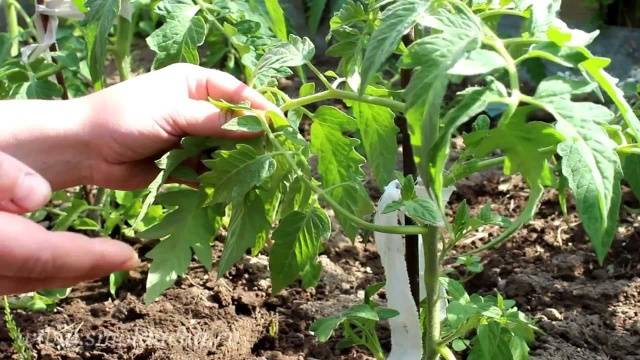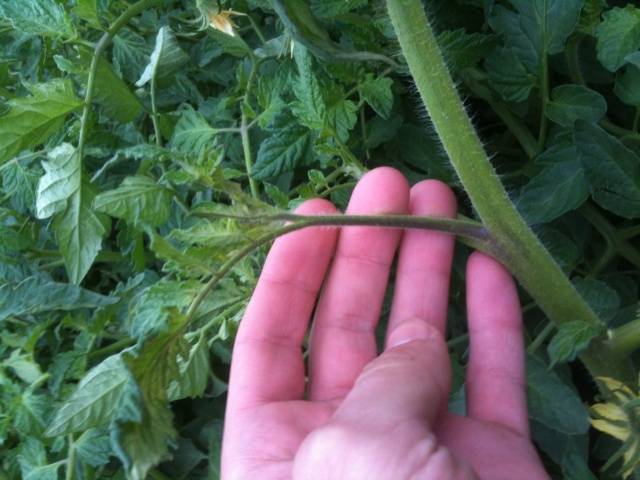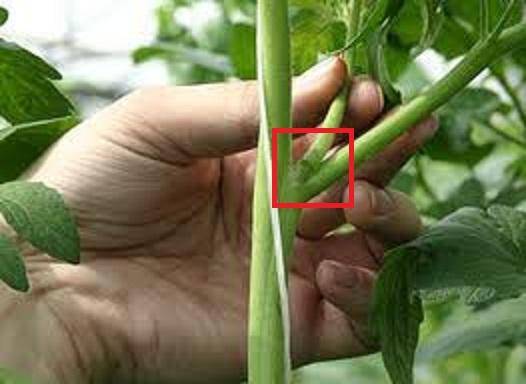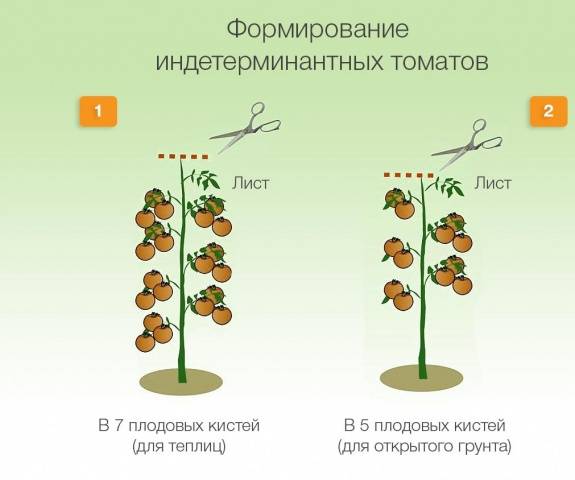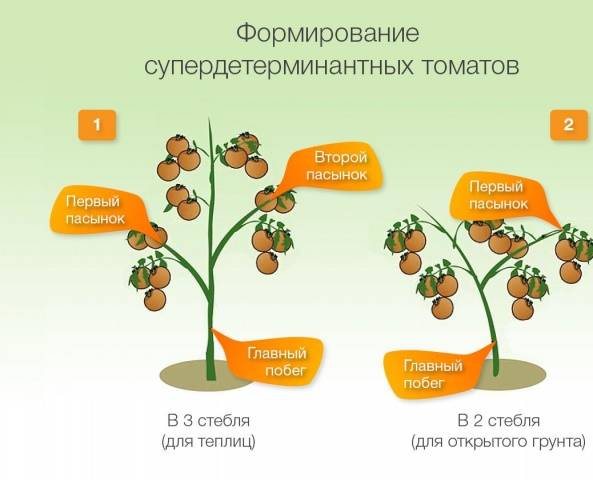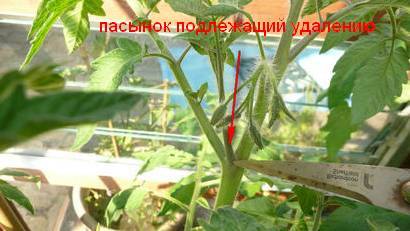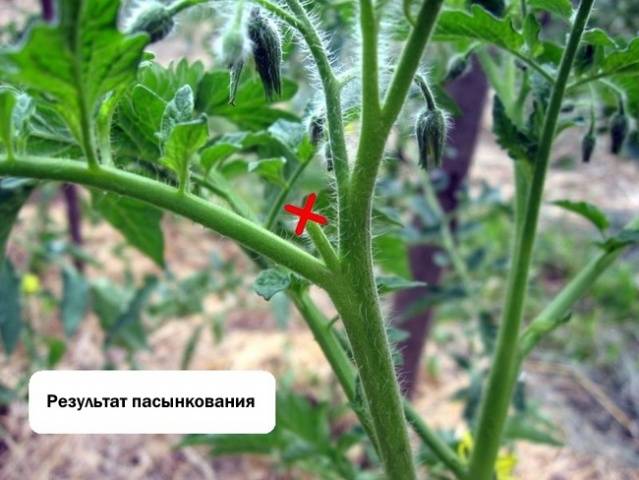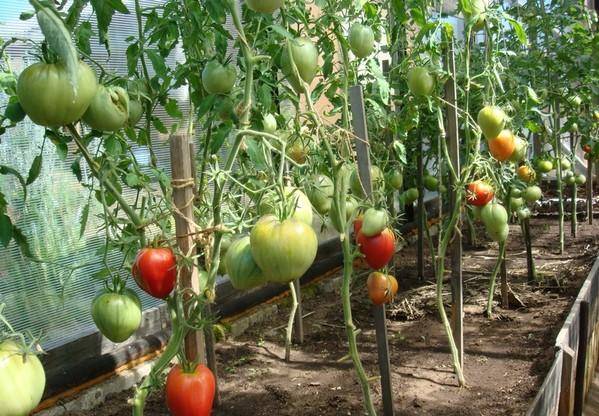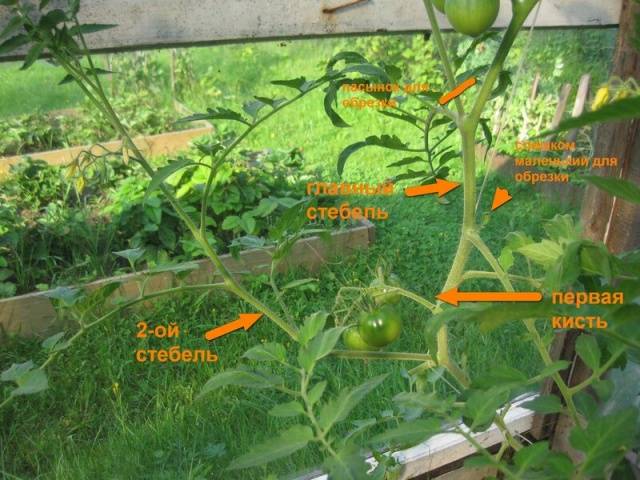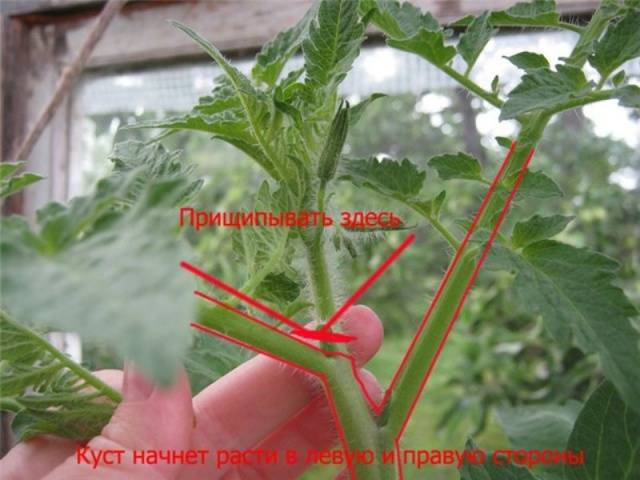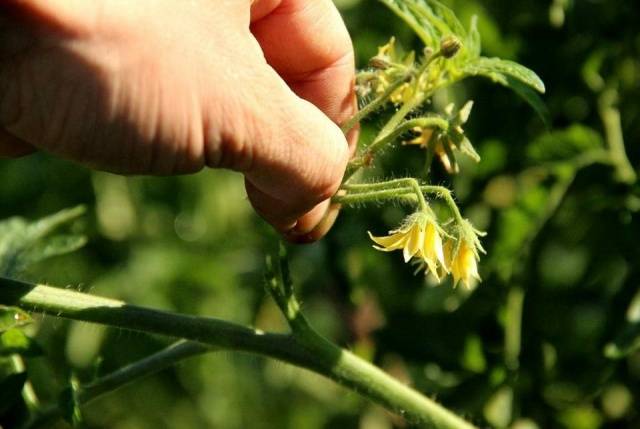Content
Growing tomatoes in the open field has its own secrets and rules. One of the important stages is bush formation or pinching of side shoots. Not all summer residents use the method pinching, as a result, either the crop does not have time to ripen, or the rows of tomatoes become too thick and begin to hurt.
Why is it necessary to pinch the side shoots on tomato bushes, how to properly pinch a tomato in the open field, and how the formation methods depend on the type of plant and its variety - everything in this article.
What is pinning
The tomato bush is very branched, new shoots, leaves, flowers and ovaries constantly appear on it. It is customary to call the vegetative (dormant) buds, which are located in the leaf axils, stepchildren. Until a certain point, these buds usually sleep, but as soon as the tomato throws out all the ovaries and begins to form fruits, additional shoots begin to grow from these buds.
As a result, full-fledged lateral stems with flowers and ovaries are obtained from stepchildren. It would seem, what is bad here, because an increase in the number of fruits only plays into the hands of the gardener?
But not everything is so simple. A large number of inflorescences and ovaries does not at all indicate an increase in yield. On the contrary, extra stepchildren reduce the quality of the fruits and interfere with their ripening.
The harm from stepchildren on tomatoes is as follows:
- reduce productivity;
- help to reduce the size of all fruits;
- stretch the ripening period of tomatoes;
- thicken plantings, lead to strong foliage of the bush, which leads to the development of infections and diseases of tomatoes;
- too many fruits can lead to breakage of the shoots;
- they take away from the plant the forces it needs for the full ripening of the first fruits;
- lead to deformation and strong growth of bushes.
As a result, unsuspended tomato bushes tie a large number of fruits, but these tomatoes do not have time to ripen before the onset of the autumn cold, since the plant does not have enough strength for such a volume of harvest. The gardener will receive a bush with green and small fruits by autumn.
Is it always necessary to remove side shoots on tomatoes
The formation of tomatoes in open ground is not always necessary; a more thorough pinching procedure should be carried out in greenhouses. The fact is that domestic gardeners, as a rule, plant early-maturing determinant tomato varieties in open ground.
Determinant tomato varieties characterized by the fact that after a certain number of ovaries appear on the bushes (usually from three to seven), the growth of lateral shoots stops automatically. Thus, tomatoes do not need to be shaped and controlled - as many stepchildren will grow on the bushes as required to ensure a normal harvest.
However, this only applies to super early or early determinant varieties, the ripening of fruits on which ends in the middle of summer. The climate of most regions of Russia is such that rains and a decrease in temperature begin in August, while in September there may be the first frosts.
In such climatic conditions, tomatoes do not ripen, they can only start to hurt and shed the ovaries along with green fruits. Therefore, among the gardeners of the country there is an unspoken rule: "Only those tomatoes that have formed before August 1 will have time to ripen." What to do with the rest of the shoots and inflorescences? They must be removed or broken off, that is, pinched. This is what pinching tomatoes in the open field for varieties with limited growth (determinant).
Indeterminate tomato varieties have such a feature: stepchildren and additional shoots on the bushes are formed constantly, and the main stem does not stop its growth either. To control the number of fruits and form a bush, you have to constantly pinch the shoots of such tomatoes.
Massive stepsons begin to appear when 5-7 ovaries are formed on the bushes (depending on the variety). From now on the gardener needs to periodically, once every 7-10 days, inspect the tomato bushes and break off the processes.
Scheme of the formation of indeterminate tomatoes in the open field is somewhat different from pinching determinant varieties. In this case, not only the lateral processes under the leaves of the tomatoes are pinched, the tops of the main stems also need to be broken off. If this is not done, the bush will continue to grow upward, at the same time forming inflorescences and ovaries - all this weakens the plant and inhibits the ripening of fruits.
Today, breeders have bred many varieties of tomatoes that, in general, do not form stepchildren.... This, of course, greatly facilitates the care of the beds - such tomatoes can be planted and wait for the harvest, only by regularly watering the bushes.
These varieties include superdeterminant and hybrid tomatoes. These species are "programmed" to form a certain number of ovaries, after which the growth of the bushes stops.
How to remove stepsons
The correct pinching of tomatoes not only ensures an early harvest and large fruits, the health of the whole plant directly depends on this.
Here are a few rules that a gardener must follow:
- The formation of tomatoes in the open field is performed in the morning. It is in the morning that the tomato bushes are saturated with moisture as much as possible, the stems are elastic and fragile, so the stepson will break off easier, the trauma of the plant will be minimal. In addition, until the end of the day and before the onset of a cold, wet night, the tomato will have enough time for the wounds to heal and dry out - the risk of infection of the broken-off sites of the stepsons is minimal.
- The optimal time for removing stepchildren from a tomato is when the length of the shoots is from three to five centimeters. Such shoots have not yet had time to take away a lot of strength from the tomato bush, the place of their breakage will be unobtrusive, the wound is small. It is better not to break off larger shoots, if the gardener missed them or did not manage to remove them at a "young" age, you need to pinch the tops of these shoots.
- It is best to pick off the stepchildren by hand, but it is recommended to wear rubber gloves to prevent infection in the wounds. The stepson is clamped with two fingers and swayed a little from side to side, gradually breaking off.
- If a knife or scissors is used to remove stepchildren, it is necessary to monitor the sharpness of the blades - they should be very thin in order to less injure the tomatoes. After processing each bush, the blade is disinfected with any means (for example, one percent potassium permanganate solution).
- Do not throw dangling tomato stepchildren on the ground, they can become a source of infection. The shoots must be collected and thrown away from the garden.
- The point of development of tall tomatoes is pinched in the same way as the side shoots. It is necessary to leave 3-4 sheets under the place of the break.
An approximate scheme for pinching a tomato is shown in the photo below.
How to form tomatoes outdoors
The method or scheme for the formation of tomato bushes depends on several factors at once:
- plant type (determinant or indeterminate);
- tomato varieties (stunted or not);
- ripening speed of tomatoes;
- weather conditions (in a cloudy and cool summer, even determinant varieties run the risk of not having time to give up the entire crop, so the bushes are "thinned out" a little, removing several stepsons);
- climatic features of the region (if in the southern regions even indeterminate varieties can bear fruit until November, then in the northern part of the country only those ovaries are left that managed to take shape in the first half of summer);
- the requirements of the gardener himself: for someone, the number of fruits is important, while for others, the quality and size of tomatoes are a priority.
If the owner of the site puts yield in the first place, it is necessary to grow tomatoes in several stems.
Formation of tomatoes into one stem
The method of growing tomatoes in one stem is most often used in greenhouse conditions, but it can also be used outdoors, especially when tall, indeterminate varieties are planted.
This principle obliges the gardener to remove absolutely all stepchildren, leaving only one central stem... As a result, only a certain number of ovaries will be formed, which is regulated by the tomato variety.
The complexity of the method lies in the fact that you have to constantly monitor the condition of the bush and remove new shoots in a timely manner. In addition, the formation into one stem sharply reduces the total number of fruits - there will be 3-5 ovaries on the bushes.
This method is suitable for those who grow early tomatoes for sale, because the plant, not weakened by the stepsons, throws all its strength into the ripening of the first (and last) fruits. It is possible to get the harvest 10-14 days earlier, and the cost of tomatoes, as you know, during this period is very high. In addition, the fruits will be large and beautiful.
Formation of tomatoes into two stems
Much more often, domestic gardeners use the methods of forming bushes into several stems, because this way it is possible to increase the yield of tomatoes.
To get two trunks on the bushes, it is necessary to remove all the stepsons, leaving only the one that is located under the very first brush. This lateral shoot will become a full-fledged stem, almost as many fruits will ripen on it as on the central stem.
Thus, it will be possible to increase the yield of tomatoes almost twice, while the rate of their ripening will be slightly slower than in the first case. The tomatoes themselves may also be somewhat smaller than if the bush was formed into only one stem.
Formation of bushes into three stems
This is the best option for the formation of tomato bushes, therefore it is most often used when growing tomatoes in the open field.
To complete the formation of a bush in three stems, it is necessary to determine the central shoot, highlight the first ovary. Now it remains to follow the formation of leaves, below this ovary: you need to leave stepchildren growing from the axils of the first and second leaves after the ovary.
Since the leaves on the tomatoes appear alternately, the left stepchildren should be directed in opposite directions - this will preserve the shape and balance of the bush (as in the photo).
Formation of tomatoes into three stalks allows you to get the maximum yield, the fruits will be large enough and ripe... Only in the northern regions or in some areas of the middle lane, a few unripe fruits can remain on the bushes. In this case, the green tomatoes are picked and left to ripen in a dry and warm place (for example, on a windowsill).
Outcomes
Hearing about pinching a tomato and about the formation of bushes into several stems, you do not need to immediately rush to your seedlings with scissors. It is not necessary to remove and pinch shoots in every case; this procedure is mandatory only for indeterminate varieties with uncontrolled growth. In other cases, the gardener must independently decide on the need for pinching, based on the condition of the plants, the number of ovaries on them and the weather conditions in their region.
You can learn more about pinching a tomato in the open field from the video:
